








![]()
| click on title to purchase item |
|
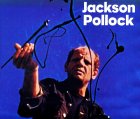 |
Jackson
Pollock
The almost mythic Jackson Pollock--a roughshod, ill-mannered, prodigiously ambitious, aggressive, alcoholic, tormented artist--is alive and unwell in this book. But Kirk Varnedoe and Pepe Karmel, the chief curator and adjunct assistant curator, respectively, of the Museum of Modern Art's Department of Painting and Sculpture, also go deeply into Pollock's art in eye-opening ways. This book is the catalog for the retrospective of Pollock's art-shattering oeuvre at the Museum of Modern Art in the fall of 1998 and includes many biographical pictures as well as color plates of Pollock's paintings, from the awkward but earnest early works to the late, great, famous canvasses. Varnedoe's essay, aptly titled "Comet: Jackson Pollock's Life and Work," deftly invites the reader into Pollock's world, starting with his country studio: "The structure, often called a barn, is in fact more like a glorified tool shed." Karmel's essay, "Pollock at Work: The Films and Photographs of Hans Namuth," is a truly groundbreaking exploration of Pollock's technique. Karmel has scrutinized every frame of every piece of film, still or moving, ever taken of Pollock painting. He arrives at absolutely original conclusions: Pollock's all-over swirls of dripped and flung paint often began as figurative works and clearly relate to such all-American stalwarts as Thomas Hart Benton. Karmel makes countless other sharp observations, noting the difference, for example, between fast-looking marks and the slow, deliberate movements with which they were made (and vice versa). His essay is a work of brilliant scholarship, written thrillingly, and it will forever change the way any serious viewer looks at Pollock's paintings. It makes this volume absolutely essential for understanding the work of this great, sad artist.
|
 |
Jackson Pollock : Interviews, Articles, and Reviews From the Publisher A Museum of Modern Art Book Assembled by one of the curators of the museum's Pollock retrospective, this anthology surveys five decades of critical response to Pollock, bringing together essential (and hard-to-find) texts from newspapers, journals, and catalogues. It includes all of Pollock's statements about his art as well as interviews with his wife, the painter Lee Krasner, providing firsthand testimony about his goals and methods. Reviews of Pollock's early exhibitions reveal the intense interest his work aroused even before he arrived at his famous technique of "dripping" paint. Later articles trace the growth of Pollock's myth after his death in 1956 and document the continuing debate over psychological and mythological interpretations of Pollock's work.
|
 |
Love Affair: A Memoir of Jackson Pollock I saw the motion picture "pollock" and started to take intrest in the life of Jackson Pollock. when I came across this book I got curious and bought it - what can she possibly write about? I was a little amazed: the book was totaly about her! all she wrote about was herself and pollock's great love for her and how he became depended on her completely. she kept going on and on about how he needed love so despretly and how he was never loved before, totally ignoring his wife, Lee Krasner, and the many years she spent with him, standing beside him and helping him become the appreciated artist he is. she described Krasner as a terrifying angry woman that all she did was terrorize Pollock, when she seemed to forget she had her so called love affair with a married man, invading Krasner's house and living there with Pollock while Krasner was in europe, pretending she was married to him. I dont think this can be considered a memoir of Jackson Pollock. it does speak of the last months of his life, but it gives very little information about him as a person (beside the fact the he could'nt live without Ruth Kligman) and nothing at all about Pollock as an artist. in fact, in that period of time he did not paint at all.
|
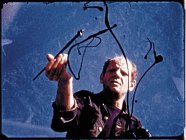 |
Jackson Pollock : New Approaches The Museum of Modern Art's retrospective, this volume presents nine critical essays offering dramatically different ways of understanding Pollock's art and influence. The essays reveal not just the richness of Pollock's work, but also the vitality and diversity of contemporary criticism. The essays were written by Robert Storr, Pepe Karmel, James Coddington and Carol Mancusi-Ungaro, Kirk Varnedoe, T. J. Clark, Jeremy Lewison, Rosalind Krauss, and Anne Wagner. 160 illustrations, 20 in full color, 711/2 x 10" |
 |
Jackson Pollock : Energy Made Visible
|
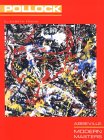 |
Jackson Pollock (Modern Masters Series, Vol. 3)
|
 |
To a Violent Grave : An Oral Biography of Jackson Pollock
|
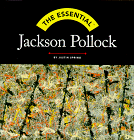 |
The Essential Jackson Pollock (Essentials)
|
 |
Such Desperate Joy : Imagining Jackson Pollock
|
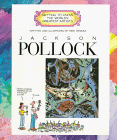 |
Jackson Pollock (Getting to Know the World's Greatest Artists)
|
 |
The Fate of a Gesture : Jackson Pollock and Post-War American Art
|
 |
|
 |
The Prime Minister's Christmas Card : Blue Poles and Cultural Politics in the Whitlam Era
|
 |
American Art 1908-1947 : From Winslow Homer to Jackson Pollock Offering a fresh perspective on American art from the first half of the 20th century, this elegant book presents approximately 200 paintings, works on paper, photographs, and sculpture by such artists as Ansel Adams, Milton Avery, Walker Evans, Edward Hopper, Georgia O'Keeffe, Ben Shahn, Paul Strand, and Grant Wood, along with works by other well-known and less-familiar artists. All the works are reproduced in stunning full-color and duotone plates. These works have been brought together for a traveling exhibition organized through F.R.A.M.E., a major artistic exchange program between the United States and France. This book, published to accompany the inaugural exhibition of the program, includes texts by French and American art historians that place the works in art-historical context.
|
 |
This intelligent and lavishly illustrated volume, which first appeared in a 1989 hardcover edition, covers Pollock's entire career, his early influences, and the progression of the themes, techniques, and accomplishments of his life as an artist. Ellen Landau's text is enlightening, but the best part of this book is, inevitably, the illustrations themselves, which are an unparalleled feast for the eyes. For those who want to experience and understand Pollock's art (rather than dwell on his personal problems) this is an excellent choice. |